If you actually need to lose weight, you’d probably love a magic food that you could eat as much as you want without impacting your weight. While we’d all love to believe this exists… it doesn’t. But these summer foods can help kickstart your weightloss and keep your body healthy.
“There is not a lot of evidence for specific foods speeding up your metabolism,” admits Sheri Zidenberg-Cherr, PhD, a researcher at the University of California, Davis, department of nutrition. But that doesn’t mean there aren’t foods that can contribute to weight loss as part of a reduced-calorie diet and active lifestyle — after all, a girl’s gotta eat.
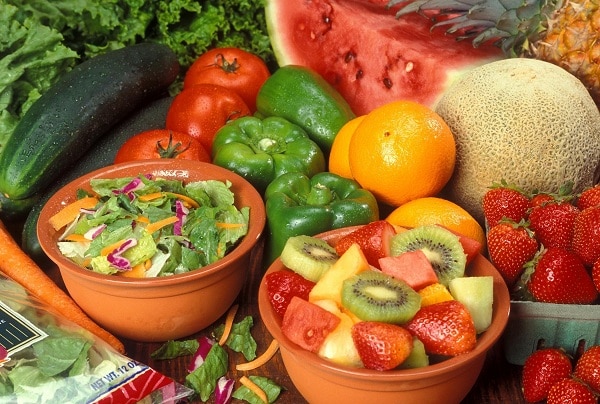
Here’s what Zidenberg-Cherr advises: Eat foods that make you feel full and satisfied, and your body won’t want to consume as many calories, so you’ll ultimately shed stubborn pounds. Think of fruits, vegetables, and whole grains — particularly ones that taste especially good in summer months, because you’ll want to fill up on them, and those with supposed superpowers, according to science. Here’s what you’ll want to dig into from summer’s bounty:
Chilled Soups
Often vegetable-based, chilled soups contain lots of fiber — a macronutrient that’s proven to reduce appetite and total calorie intake, promoting weight loss over time. Because soup is largely made up of calorie-free water, you can consume a large serving — which takes up room in your belly — for a reasonable number of calories. (Depending on the recipe, two cups of tomato-based gazpacho can clock in under 100 calories.)
Watermelon
This summer staple contains the kind of fiber that binds with and carries fat out of your system. But it gets better: Watermelon also contains a high percentage of water, which helps keep you hydrated and thus can increase your overall calorie expenditure, according to several studies. (FWIW, one cup contains fewer calories than any other summer fruit.) Bonus: Watermelon is great for your hair and skin.
Strawberries
Like many fruits, they’re packed with fiber and other nutrients. But they’re also one of the lower-calorie fruits on the list above — and easier to manage than a whole watermelon when you’re food shopping.The compound nitrate found promotes blood flow and oxygen in our body, which is great for weight loss. One cup contains only 54 calories.
Summer Squash
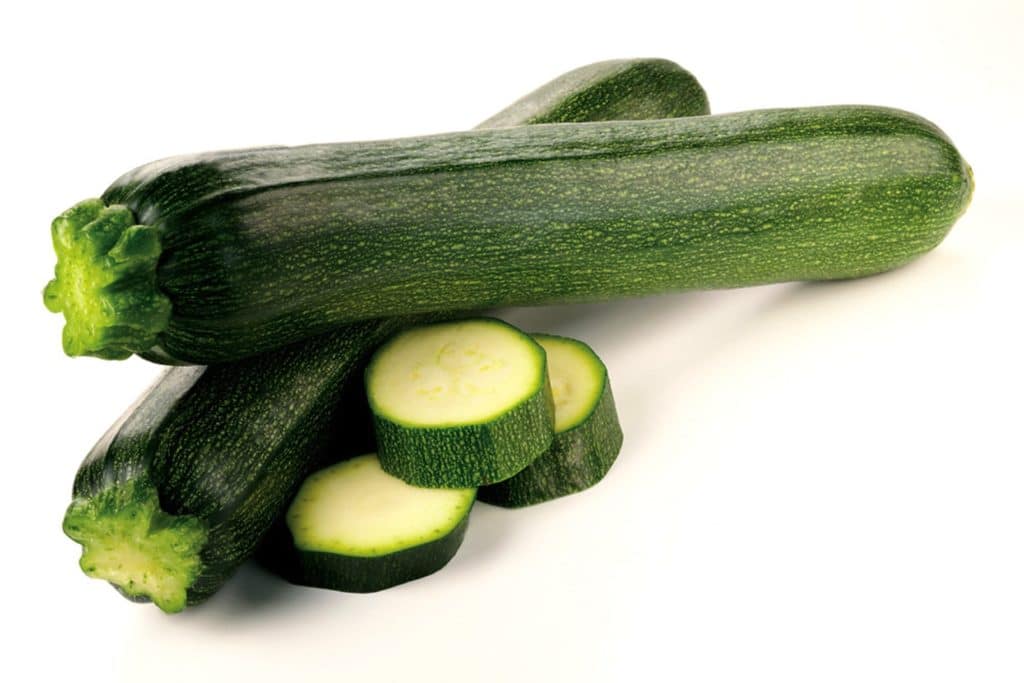
Zucchini has its own merits — i.e., it’s low in calories — but its best trick is standing in for higher-calorie pasta. (Just spiralize and sauté, or swap for noodles in a pasta recipe.) You can also core and stuff squash with other vegetables and whole grains to round out a meal.
Kale
In season starting in midsummer, kale is already every healthy person’s salad staple. But the nutrient-dense green can also add a solid dose of fiber to a Greek yogurt-based smoothie. This combo makes a super-filling and refreshing summer snack that fends off urges to reach for higher-calorie snacks, according to Zidenberg-Cherr.
Given the incredibly low calorie content, kale is among the most nutrient dense foods in existence. Eating more kale is a great way to dramatically increase the total nutrient content of your diet.
Grilled Vegetables
Crowd your BBQ plate with grilled veggies — they’re lower in calories and fat, and higher in fiber than the second cheeseburger you’d be craving had you not filled up on eggplant, sweet peppers, and onions.
Most people don’t realize that vegetables retain more of their vitamins and minerals when they’re grilled. This is especially true with veggies that have a low water content.
Plus, vegetables that you toss on the grill are usually fresh and in season, which are a step above the canned versions. Wrapping in tin foil or just placing on top of your grill, cooking your veggies in this manner is nutritionally advantageous than boiling or frying.
Grilled Seafood
“One of the most satisfying ways to eat and control weight is to include lean protein in every meal,” Zidenberg-Cherr says, and research suggests that just digesting protein can burn a bunch of calories. Grilled fish is a perfect source of summertime protein because it’s lighter and leaner than, say, a steak.
The act of grilling gets you outdoors. A lot of parents toss around a Frisbee or kick a ball around the grass with their kids while grilling dinner. The act of cooking and eating outdoors encourages more activity, which we all know is just an added health bonus to go along with your delicious dinner.
(FWIW: Richer proteins such as steak can stick around in your stomach forever — which will keep you full, for sure, but won’t necessarily make you feel your best in the heat.) Here’s how the most common types of seafood stack up:
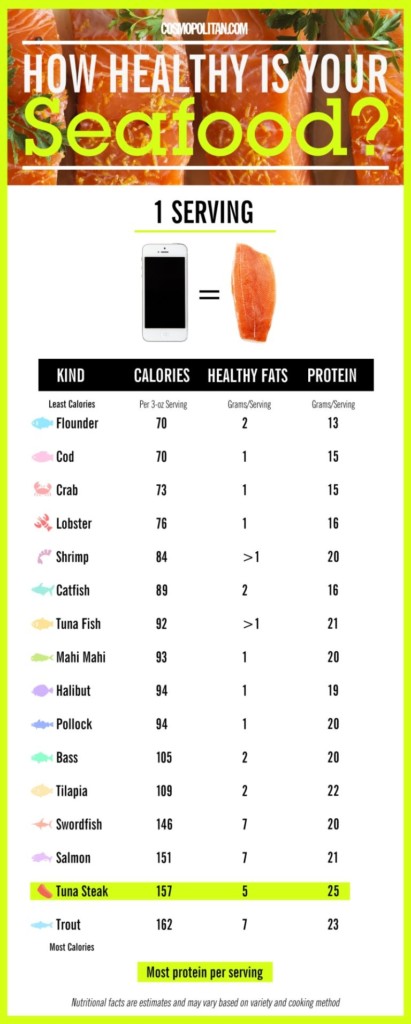
Don’t shy away from the fattier fish on the list above. They can contain omega-3 oil, which has been shown to reduce abdominal fat when combined with a weight loss program.
Cucumbers
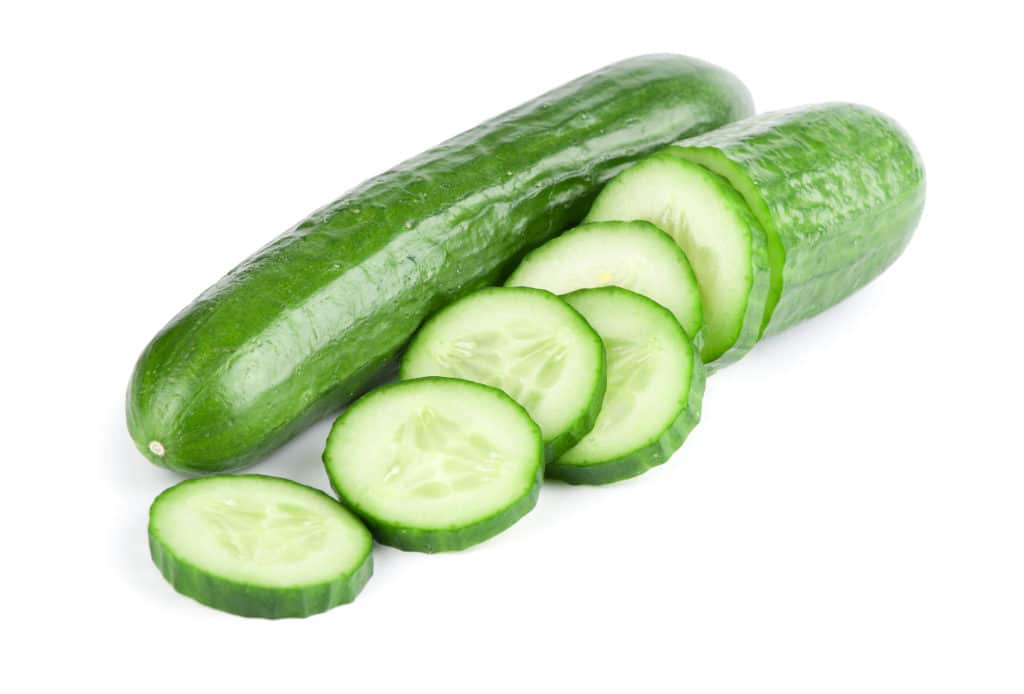
The main reasons these bad boys taste refreshing AF is their high water content, which helps the body stay hydrated and stops dehydration from occurring. They also do wonders for your skin. They help with bloating since they’re mostly water.
Tomatoes
As if you need a reason to eat summer tomatoes (if you’ve tasted them, you’ve tasted heaven), they’re another great source of water you can eat. Same deal as cucumbers, you can eat them so many different ways, that you’ll nevertire of incorperating them into your daily diet.
Avocados
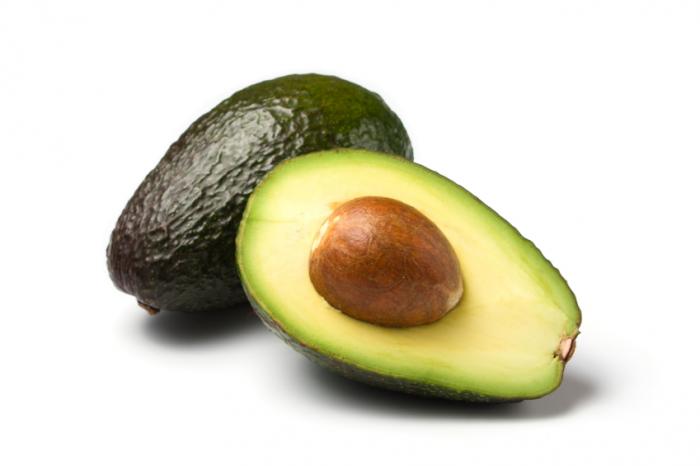
Of course summer can’t happen without avocado, but it’s the low-sugar fruit’s unique mix of healthy fats and fiber that gives it a special spot on this list. Avocado can be made into so many things– guacamole, avocado toast, salad, tuna, chicken salad and so much more! (Remember: Dietary fat slows digestion so you don’t end up eating more calories than your body needs.)
Raspberries
Raspberry is low in fat and high in fiber, so they’ll fill you up without weighing you down with extra calories. They’re also full of water and potassium which will stave off dehydration and all the unpleasant side-effects that accompany it.
You’d never guess that one cup of these berries contains less sugar than any other summer berries — and it’s sugar that makes your blood sugar go berserk, leaving you hungry again shortly after eating. The oil from raspberries has a sun protection factor. Furthermore, it helps to lose weight and also takes proper care of your skin while aging.
See also: Top 40 Superfoods For A Healthy Diet.
Spicy Salsa
Capaicinoids are the naturally occurring chemicals found in hot chili peppers. Research suggests eating small amounts of the ingredient naturally leads you to eat less. There’s also lots of evidence that the stuff goes right to your fat cells, ultimately reducing abdominal fat. And at the very least: Hot salsas tend to contain more nutrient-rich veggies and fewer calories than many dairy and bean-based dips — sorry, hummus! Spicy foods also tends to speed up your metabolism, helping burn calories faster.
Iced Hibiscus Tea
In a truly genius move, registered dietitian Dawn Jackson drinks this fruity-tasting, sugar-free iced tea from a wine glass to resist the urge to wine it up, mostly because alcohol contributes lots of calories and stokes your appetite, so it pretty much obliterates any efforts to eat healthily. Although there’s not sufficient evidence that the tea actually promotes weight loss, Jackson swears it tastes like Kool-Aid for adults — a hydrating treat.
Pineapples
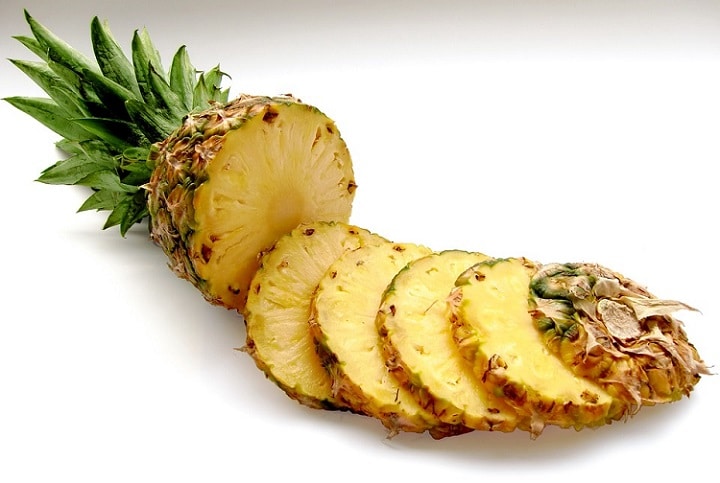
While technically available are available all year long, the tropical fruit contains two potent enzymes that make it well worth eating in the summertime, according to Haylie Pomroy, celebrity nutritionist and author of The Fast Metabolism Diet. These enzymes help you break down food and metabolize body fat more efficiently.
This delicious and sweet fruit will not only satiate your sweet tooth but will enrich your body with Vitamin C. This vitamin, as you know it, will provide all the resistance your body needs to fight against cold, flu etc. On the other hand, it is also abundant in antioxidants.
If you are in dire need to munch on some snack then wait no more. Cut a pineapple because it is sure to fill your stomach as it is rich in fibers. This will keep your stomach busy for a while.
Jicama
Grown year-round in tropical climates, this crunchy veggie contains a naturally occurring prebiotic that helps your body metabolize B vitamins — a good thing, considering the nutrient helps produce an amino acid that promotes fat metabolism, according to Pomroy, who adds that this superpower can promote a flat belly, healthy bowel movement, and high energy levels. Registered dietitian Dawn Jackson Blatner recommends snacking on jicama sticks dressed with a squeeze of lime and chili powder, which can beat healthy eaters’ baby carrot fatigue.
Frozen Fruit
When you eat cold foods, your metabolism increases to warm the foods to body temperature, and burns extra calories from carbs and fat in the process, according to Brian C. Weiner, MD, a clinical associate professor at University of Florida in Gainsville. Because the hardest part is turning frozen-solid foods into liquid, eating frozen foods create the greatest calorie deficit, burning up to 160 calories to digest 1 liter (about the size of a large 7-Eleven Slurpee) of shaved ice, according to Dr. Weiner. Of course it would be crazy to start eating ice by the liter. Instead, try freezing fruit you already eat on the regular and blending it or popping it straight up; frozen grapes and bananas can make an A+ treat. And yes, you should also order your drink on ice. YOLO, it’s summer!